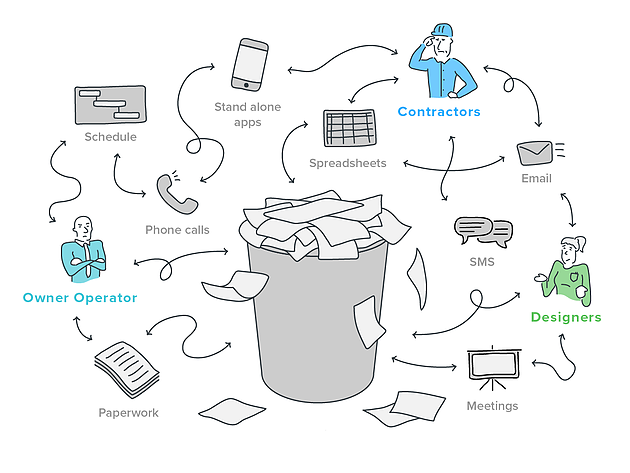Streamline Your Operations: Construction Document Management Made Easy
Streamline Your Operations: Construction Document Management Made Easy
Blog Article
Enhancing Workflow Effectiveness: Engineer's Expert Approaches for Building And Construction Document Management
In the world of building style and building and construction, the careful monitoring of documents stands as a cornerstone for job success. These techniques not only make certain smooth project progression yet also hold the essential to unlocking enhanced performance and precision in the intricate world of building document administration.
Key Record Company Strategies
When handling construction records, one of the vital techniques that engineers employ is developing a systematic and efficient organization system. This system normally involves classifying files based upon their type, such as drawings, specs, agreements, and allows. By developing distinctive and clear classifications, architects can promptly locate details information when needed, saving time and decreasing mistakes in the building and construction process.
Within each group, architects additionally organize records by making use of or producing subfolders numbering systems to denote variations or revisions (construction document management). This ordered framework makes certain that one of the most appropriate and current details is easily available while keeping a record of adjustments made throughout the task timeline
Moreover, designers usually utilize electronic file monitoring systems that offer attributes like keyword search functions, version control, and accessibility restrictions to boost organization and partnership amongst project stakeholders. These tools enhance the paper retrieval procedure, promote real-time updates, and promote smooth interaction, ultimately contributing to the general success of the building and construction task.
Collaborative System Assimilation
To enhance document administration performance in construction jobs, engineers perfectly incorporate collective platforms to improve communication and improve coordination amongst project stakeholders. By leveraging collective systems such as task management software, cloud-based storage space systems, and interaction devices, engineers can create a centralized hub for all project-related documents and communication networks. These systems allow staff member to gain access to, evaluation, and team up on records in real-time, lowering delays and the threat of errors connected with conventional paper monitoring techniques.
Collaborative system integration additionally cultivates transparency and accountability within the task team, as all stakeholders have exposure right into the most recent project updates and alterations. By streamlining interaction and document sharing, designers can ensure that all employee are working from one of the most current details, reducing the chances of misunderstandings or problems occurring because of out-of-date papers.
In addition, joint platforms enable seamless partnership between architects, professionals, clients, and other task stakeholders, promoting an extra effective and natural job process. By breaking down communication obstacles and facilitating details exchange, engineers can drive productivity and technology in building and construction projects, inevitably causing effective job end results.
Version Control Best Practices
Applying effective version control techniques is vital for preserving file precision and consistency in construction jobs. By establishing a clear system for managing revisions, job teams can guarantee that everybody is functioning from one of the most current documentation, decreasing the threat of errors and discrepancies during the building and construction stage.
One of the vital best methods for version control is to appoint unique identifiers per paper variation. This can be attained by utilizing a numbering system or date stamp that plainly shows the order of modifications. By clearly classifying each model, team members can conveniently track the progression of the document and recognize the most recent version.

Automation Tools for Efficiency

Document control software program, like Procore or PlanGrid, systematizes project paperwork, making it conveniently available to all stakeholders. These systems permit real-time collaboration, variation control, and automated back-ups, protecting against data loss. In Addition, Building Information Modeling (BIM) software application automates the generation of building illustrations and ensures that modifications are integrated across all relevant documents.
Integrating automation tools with cloud storage services additionally improves ease of access and protection. By automating the paper monitoring process, project groups can concentrate their effort and time on value-adding activities, inevitably boosting efficiency and job results.
Secure Information Monitoring Solutions
Successfully guarding and handling job data is critical in the building sector to make certain confidentiality and stability throughout the project lifecycle. Architectural firms can utilize encrypted cloud storage space solutions to securely save and share task documents with authorized employees.
Moreover, utilizing digital legal rights administration (DRM) devices adds an additional layer of safety by protecting against the unauthorized circulation or replication of task files. Normal information backups are vital to alleviate the risk of information loss because of unforeseen situations like hardware failures or cyber-attacks. Joint platforms with integrated safety functions make it possible for seamless communication and hop over to here documents sharing amongst job employee while keeping data stability.
Conclusion
In final thought, applying key record organization techniques, incorporating joint systems, exercising variation control ideal methods, making use of automation tools, and adopting protected data administration solutions are important approaches for boosting operations efficiency in building and construction paper management. These skilled methods can simplify procedures, enhance communication, guarantee accuracy, and keep data security throughout the building job lifecycle.
In the world of architectural style and building, the careful administration of papers stands as a keystone for project success. These techniques not only ensure smooth job development but also hold the key to opening improved productivity and accuracy in the complex world of construction paper monitoring.
To maximize paper administration effectiveness in building and construction tasks, engineers perfectly incorporate collective systems to enhance interaction and enhance control amongst project stakeholders. These platforms allow team members to accessibility, review, and work read this article together on files in real-time, lowering delays and the danger of errors connected with traditional document administration approaches.
Utilizing automation tools in building and construction record monitoring substantially boosts effectiveness and streamlines processes for job groups. construction document management.
Report this page